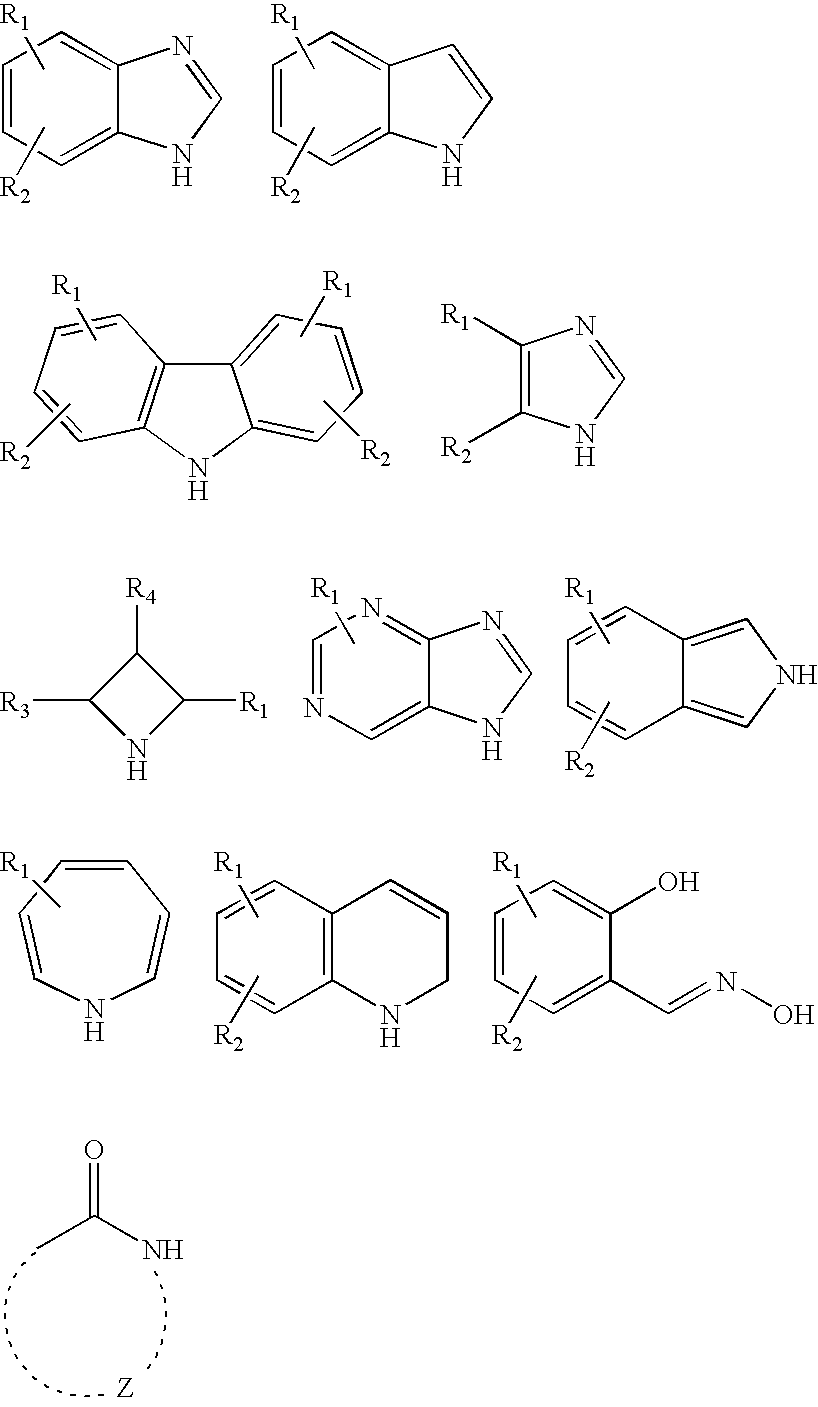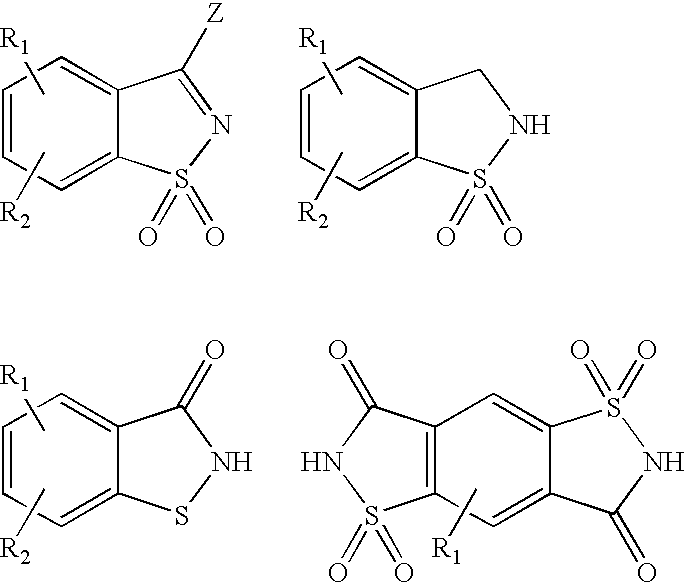Antimicrobial Devices and Compositions
- Summary
- Abstract
- Description
- Claims
- Application Information
AI Technical Summary
Benefits of technology
Problems solved by technology
Method used
Image
Examples
example 1 cotton
Gauze
[0178]Cotton gauze with silver was prepared as follows: Sodium saccharinate (0.205 gm) was dissolved in 10 ml de-ionized water to which 1 ml of silver nitrate (1M) was added to form silver saccharinate precipitate. 2 ml of suspension was diluted with 3 ml of water and evenly spread on 2″×2″ cotton gauze (Curity brand from The Kendall Company, Mansfield, Mass.). The gauze was blotted to remove excess liquid and dried in oven at 40-45° C.
A. 3″×3″ cotton gauze (Curity brand from The Kendall Company, Mansfield, Mass.) was dipped in 10-12 ml of 0.1M silver nitrate solution. It was blotted on paper and dipped in 15 to 20 ml of 0.125 M sodium saccharin to precipitate silver saccharinate in and on the cotton fibers, blotted and dried at 70° C. for 0.5 h.
B. Gauze was made by the same procedure as in example 1A except it was dried in oven at 135° C. for 12 minutes.
C. Gauze was made by the procedure of Example 1A, except it was dried at 135° C. for 30 minutes.
D. Gauze material (3″×3″ Curi...
example 2
Alginate Fiber Dressing
[0179]1 ml of silver saccharinate suspension prepared in Example 1 was diluted with 10 ml denatured ethanol to give a hazy solution. A 2″×4″ piece of alginate / CMC fiber dressing (Maxsorb brand, Medline Industries, Mundelein, Ill.) was soaked in the solution, gently blotted and dried in oven at 45° C. The resulting dressing was antimicrobial.
example 3 drain sponge
[0180]A drain sponge made of polyester and rayon (Avant brand, Medline Industries, Mundelein, Ill.) was soaked for 1-2 minutes in 30 ml silver nitrate solution (0.04 M) under ambient light, blotted with paper and then quickly soaked in sodium saccharinate solution (0.05 M) for 1-2 minutes. The sponge was blotted to squeeze out excess fluid, dried at 45° C. overnight to yield a slightly cream colored silver containing product.
PUM
| Property | Measurement | Unit |
|---|---|---|
| Temperature | aaaaa | aaaaa |
| Temperature | aaaaa | aaaaa |
| Temperature | aaaaa | aaaaa |
Abstract
Description
Claims
Application Information
 Login to View More
Login to View More - R&D
- Intellectual Property
- Life Sciences
- Materials
- Tech Scout
- Unparalleled Data Quality
- Higher Quality Content
- 60% Fewer Hallucinations
Browse by: Latest US Patents, China's latest patents, Technical Efficacy Thesaurus, Application Domain, Technology Topic, Popular Technical Reports.
© 2025 PatSnap. All rights reserved.Legal|Privacy policy|Modern Slavery Act Transparency Statement|Sitemap|About US| Contact US: help@patsnap.com



